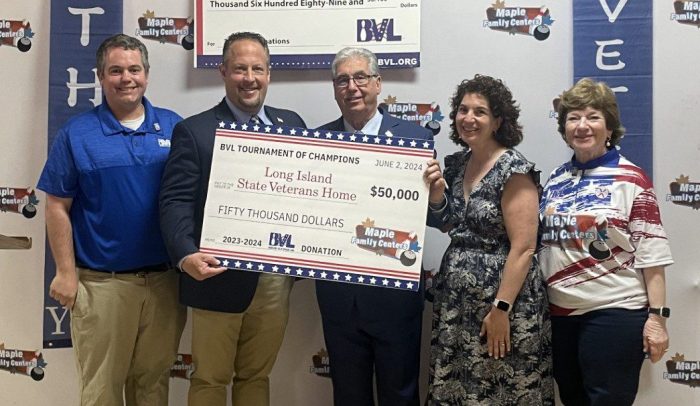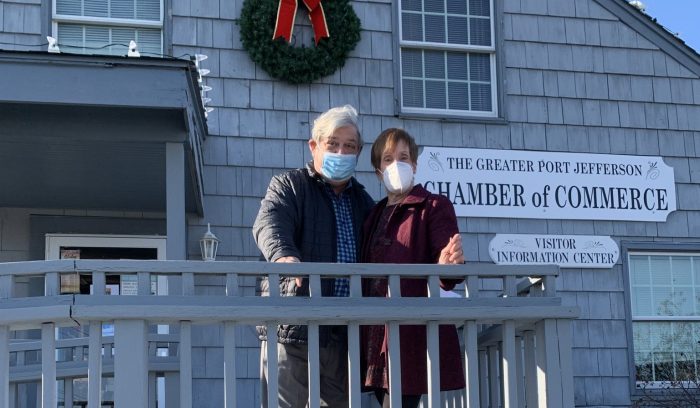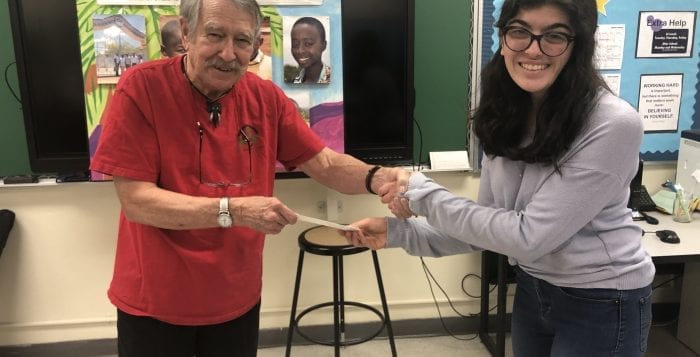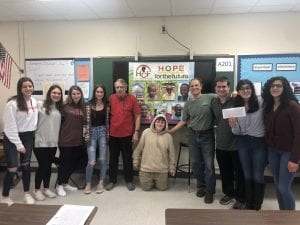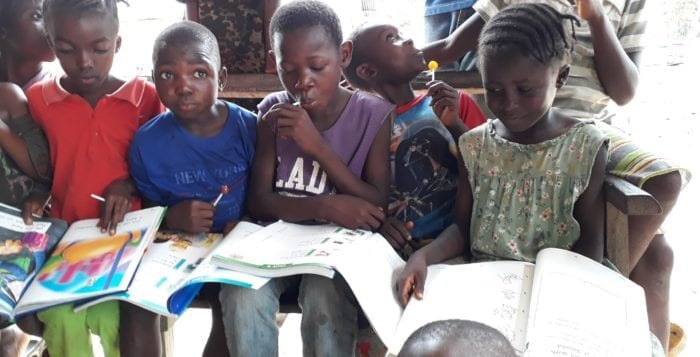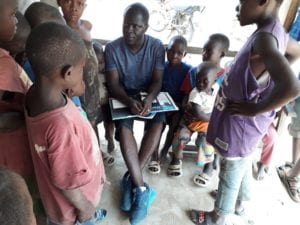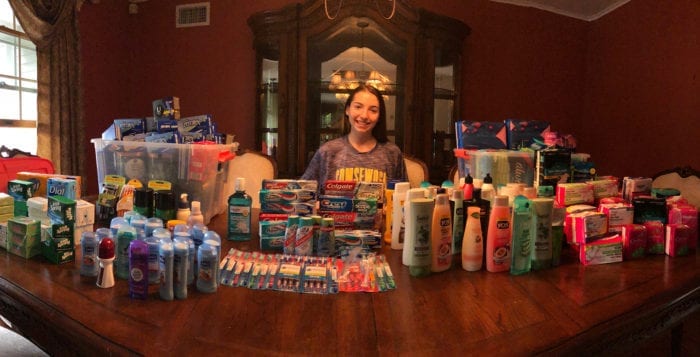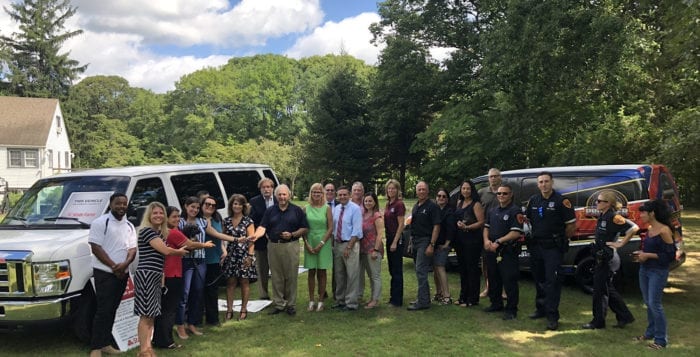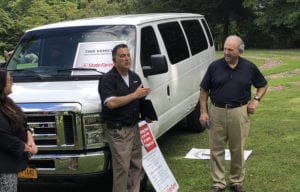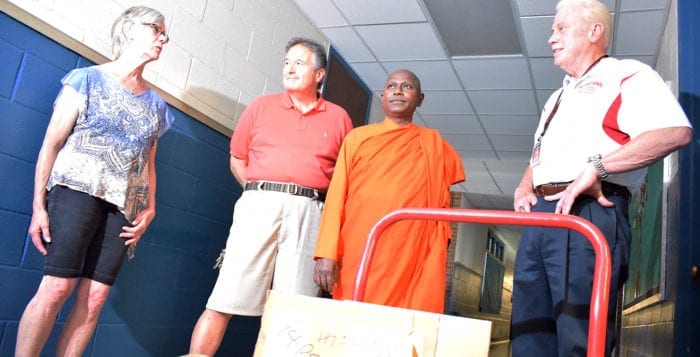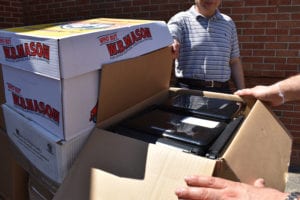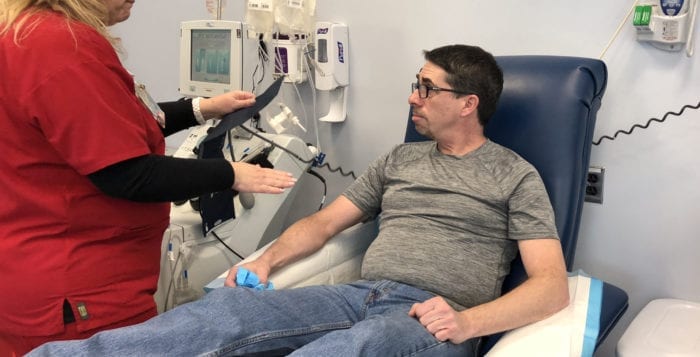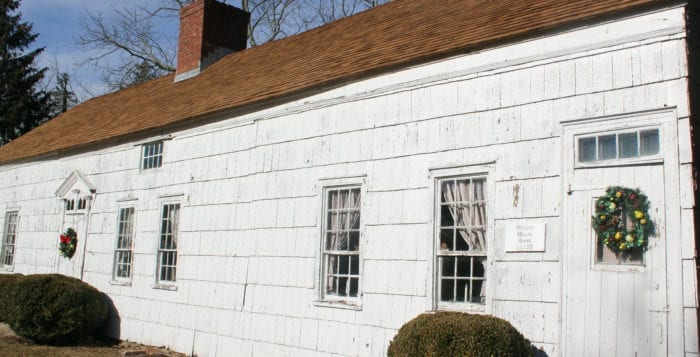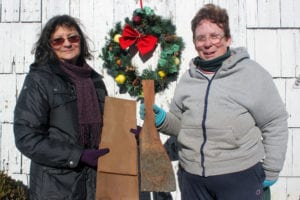Because so many are in need of life-saving blood cells, a local teacher is doing all he can to help a hospital’s supply match its demand.
Almost once a month for the past few years, Miller Avenue Elementary School fifth-grade teacher Robert Verbeck has traveled to Stony Brook University Hospital to donate his platelets. Last Thursday marked his 114th time.
Though not quite squeamish, Verbeck said he feels almost wrong for talking about it, saying he doesn’t see much nobility in sacrificing a small amount of time to help save lives.
“It might feel self-aggrandizing if I say I’m out there saving people’s lives every couple of weeks, but people can die when they don’t have enough platelets.”
— Robert Verbeck
“I almost feel guilty, though at the same time, you know you’re saving somebody’s life,”the Shoreham-Wading River school district teacher said. “It might feel self-aggrandizing if I say I’m out there saving people’s lives every couple of weeks, but people can die when they don’t have enough platelets.”
Verbeck’s stepfather and retired NYPD officer John Eaton had also been a prolific platelet donor before he passed away in May 2008. Eaton donated approximately 24 times a year, close to the maximum a person can donate in 12 months, according to Verbeck.
“He just wanted to help people — that’s why he became a cop in the first place,” Verbeck said. “He just kind of kept donating. In a weird way, I don’t want to say it’s addictive, but you get a really good feeling from doing it. You keep coming back.”
Platelets, tiny cells in the blood that form clots and stop bleeding, are essential to surviving and fighting cancer, chronic diseases and traumatic injuries. Every 30 seconds a patient is in need of platelets and more than 1 million platelet transfusions are given to patients each year in the U.S. Once a donation is given, the platelets must be used within five days.
“Stony Brook University Hospital never has enough donated platelets to satisfy our demand, therefore, we have to purchase the from other larger blood products facilities,” said Linda Pugliese, a blood bank recruiter at Stony Brook. She said most of the hospital’s platelets are purchased from Red Cross. Over 10 years, Eaton donated more than 100 times, according to Pugliese.
“I understand people have their lives, they have their problems and not everyone can sacrifice their time, but If everybody donated a few times a year, we wouldn’t be so tight.”
— Dennis Galanakis
“Without them we couldn’t function,” said Dr. Dennis Galanakis, director of transfusion medicine at Stony Brook Hospital. “The problem with platelets is they have to be stored in a special way. They have to have all the tests that are required for safety. They only have a five-day shelf life, and it takes two days to do all the tests, so in practice, the shelf life is about three days.”
Verbeck was an efficient blood donator before he heard about platelets, and while at first he said he was skeptical, that changed when a friend of his was diagnosed with cancer.
“I started doing it, and just like my dad, I felt it was a good thing to do,” he said. “I was doing it five or six times a year. After my dad died, it was a loss, and not just my personal loss, but it was a loss with their supply — it was one less person donating. So that gave me the impetus.”
The entire platelet donation process takes about two hours. Machines take half cup of blood through one vein and processes it to remove platelets before returning the blood through another vein.
April is National Donate Life Month, so to join Verbeck in his quest to feed the blood banks, potential givers can call Stony Brook Hospital at 631-444-3662 or find out more online at stonybrookmedecine.edu and to schedule an appointment.
“Only a small number of people donate at any given time,” Galanakis said. “I understand people have their lives, they have their problems and not everyone can sacrifice their time, but If everybody donated a few times a year, we wouldn’t be so tight.”

